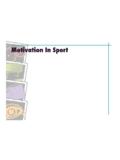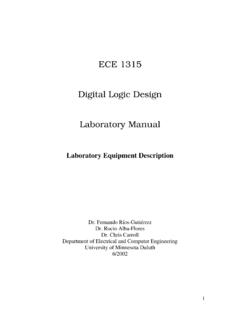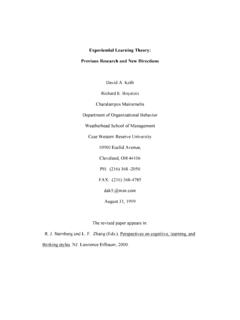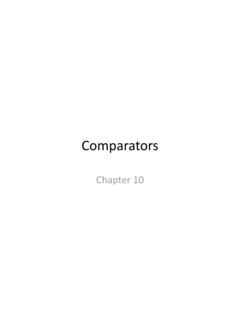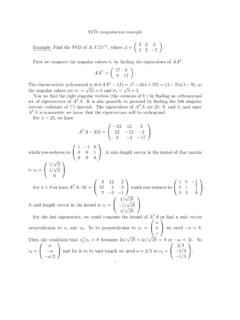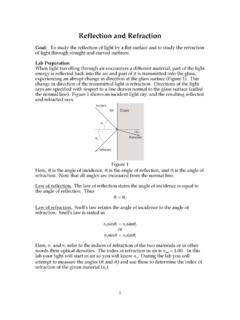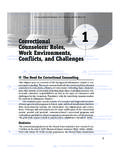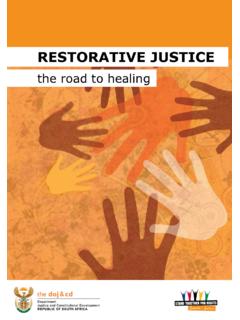Transcription of What is Restorative Justice -- revised2
1 Restorative Justice BRIEFING PAPER - 1 CENTRE FOR Justice & RECONCILIATION AT PRISON FELLOWSHIP INTERNATIONAL MAY 2005 PO BOX 17434, WASHINGTON, DC 20041 PHONE FAX EMAIL What is Restorative Justice ? Restorative Justice is a new movement in the fields of victimology and criminology. Acknowledging that crime causes injury to people and communities, it insists that Justice repair those injuries and that the parties be permitted to participate in that process. Restorative Justice programs, therefore, enable the victim, the offender and affected members of the community to be directly involved in responding to the crime. They become central to the criminal Justice process, with governmental and legal professionals serving as facilitators of a system that aims at offender accountability, reparation to the victim and full participation by the victim, offender and community.
2 The Restorative process of involving all parties often in face-to-face meetings is a powerful way of addressing not only the material and physical injuries caused by crime, but the social, psychological and relational injuries as well. When a party is not able, or does not want, to participate in such a meeting, other approaches can be taken to achieve the Restorative outcome of repairing the harm. In addressing offender accountability these approaches can include restitution, community service and other reparative sentences. In addressing victim and offender reintegration they can include material, emotional and spiritual support and assistance. A definition of Restorative Justice that emphasizes the importance of both Restorative processes and outcomes is the following: Restorative Justice is a theory of Justice that emphasizes repairing the harm caused or revealed by criminal behaviour.
3 It is best accomplished through cooperative processes that include all stakeholders. Restorative Justice is different from contemporary criminal Justice in several ways. First, it views criminal acts more comprehensively -- rather than defining crime as simply lawbreaking, it recognizes that offenders harm victims, communities and even themselves. Second, it involves more parties in responding to crime -- rather than giving key roles only to government and the offender, it includes victims and communities as well. Finally, it measures success differently -- rather than measuring how much punishment is inflicted, it measures how much harm is repaired or prevented. Victim, Offender & Community Meetings Meetings between victims, their offenders, and members of the affected community are important ways to address the relational dimension of crime and Justice .
4 It is accepted that the following three methods are hallmarks of Restorative Justice . Each requires that the offender admit responsibility for the offence. Each is limited to parties who volunteer to participate. Victim offender mediation. This is a process that provides an interested victim the opportunity to meet his offender in a safe and structured setting, engaging in a discussion of the crime with the assistance of a trained mediator. The Restorative Justice BRIEFING PAPER - 2 CENTRE FOR Justice & RECONCILIATION AT PRISON FELLOWSHIP INTERNATIONAL MAY 2005 PO BOX 17434, WASHINGTON, DC 20041 PHONE FAX EMAIL goals of victim offender mediation include: permitting victims to meet their offenders on a voluntary basis, encouraging the offender to learn about the crime's impact and to take responsibility for the resulting harm, and providing victim and offender the opportunity to develop a plan that addresses the harm.
5 There are more than 300 victim offender mediation programs in North America, and over 500 in Europe. Research on such programs has found higher satisfaction among victims and offenders who participated in mediation, lower fear among victims, a greater likelihood that the offender will complete a restitution obligation, and fewer offenders committing new offences, than among those who went through the normal court process. Family or Community Group Conferencing. This process brings together the victim, offender, and family, friends and key supporters of both in deciding how to address the aftermath of the crime. The goals of conferencing include: giving the victim an opportunity to be directly involved in responding to the crime, increasing the offender's awareness of the impact of his or her behaviour and providing an opportunity to take responsibility for it, engaging the offenders' support system for making amends and shaping the offender's future behaviour, and allowing the offender and the victim to connect to key community support.
6 Conferencing was adapted from Maori traditional practices in New Zealand, where it is operated out of the social services department, and was further modified in Australia for use by police. It is now in use in North America, Europe, and southern Africa in one of those two forms. It has been used with juvenile offenders (most New Zealand juvenile cases are handled by conferencing) and with adult offenders. Research on such programs shows very high degrees of satisfaction by victims and offenders with the process and results. Peacemaking or Sentencing Circles. This is a process designed to develop consensus among community members, victims, victim supporters, offenders, offender supporters, judges, prosecutors, defence counsel, police and court workers on an appropriate sentencing plan that addresses the concerns of all interested parties. The goals of circles include: promoting healing of all affected parties, giving the offender the opportunity to make amend, giving victims, offenders, family members and communities a voice and shared responsibility in finding constructive resolutions, addressing underlying causes of criminal behaviour, and building a sense of community around shared community values.
7 Circles were adapted from certain Native American traditional practices, and are being used throughout North America. Repairing the Harm Caused by Crime Each of the hallmark Restorative Justice processes -- victim offender mediation, community or family group conferencing, and peacemaking or sentencing circles -- ends with an agreement on how the offender will make amends for the harm caused by the crime. Two traditional criminal Justice sanctions are used in Restorative responses to crime: restitution and community service. Restorative Justice BRIEFING PAPER - 3 CENTRE FOR Justice & RECONCILIATION AT PRISON FELLOWSHIP INTERNATIONAL MAY 2005 PO BOX 17434, WASHINGTON, DC 20041 PHONE FAX EMAIL Restitution is the payment by an offender of a sum of money to compensate the victim for the financial losses caused by the crime. It is justified in a Restorative perspective as a method of holding offenders accountable for their wrongdoing, and as a method of repairing the victim's injury.
8 Restitution can be determined in the course of mediation, conferencing or circles; it can also be ordered by a judge. In other words, it is a potentially Restorative outcome that may result from either a Restorative or a conventional process. Studies have shown that restitution increases victim satisfaction with the Justice process. Some studies have shown that the use of restitution was associated with reductions in recidivism. Other studies have shown that when restitution is determined during mediation, it is more likely to actually be paid than when it results from court order alone. Community service is work performed by an offender for the benefit of the community. It is justified in a Restorative perspective as a method of addressing the harm experienced by communities when a crime occurs. However, it can be used instead for retributive reasons or as a means of rehabilitating the offender.
9 What distinguishes its use as a Restorative response is the attention given to identifying the particular harm suffered by the community as a result of the offender's crime, and the effort to ensure that the offender's community service repairs that particular harm. So, for example, offenders who put graffiti on buildings in a neighbourhood can be given the community service of removing graffiti from buildings in that neighbourhood. Community service programs in Africa build on customary processes for making amends, thus addressing community concerns and easing the offender's reintegration into the community. Restorative Justice around the World Although Restorative Justice is less than 20 years old, its influence has spread around the world at a remarkable speed. We can track international development in two basic categories: innovation by countries in their use of Restorative Justice , and integration by countries of Restorative ideas into their Justice systems.
10 Innovation. Following are examples of innovative Restorative practices: Indigenous or customary practices are being adapted for use in the criminal Justice system. Examples of this include conferencing and circles. Victim-offender encounters are taking place inside prisons in Europe and North America. In some instances this involves victims meeting with their offenders in a kind of "post sentencing mediation;" it is even used in this way on death row in Texas. In other instances the meetings involve groups of unrelated victims and offenders. These "surrogate" encounters may be used because the actual victim or offender is unknown or unavailable, or as a preparatory step toward a meeting of the person with the actual victim or offender. "Circles of Support" in Canada work with serious sexual offenders (often guilty of paedophilia) released into fearful communities at the conclusion of their sentences.
